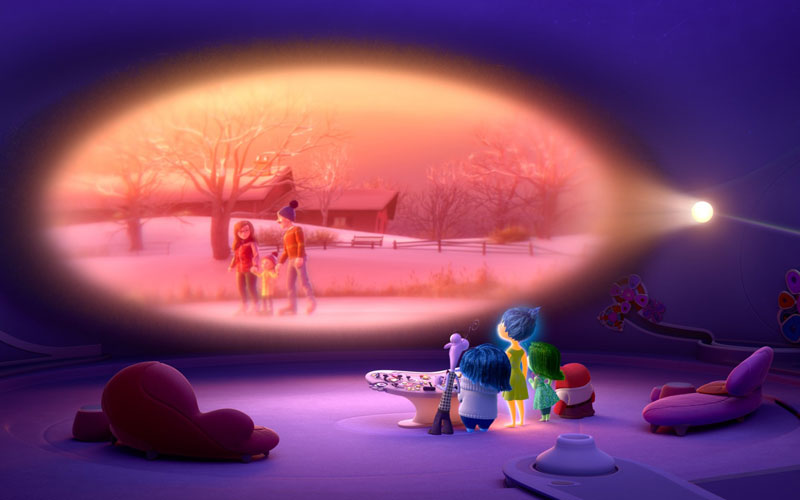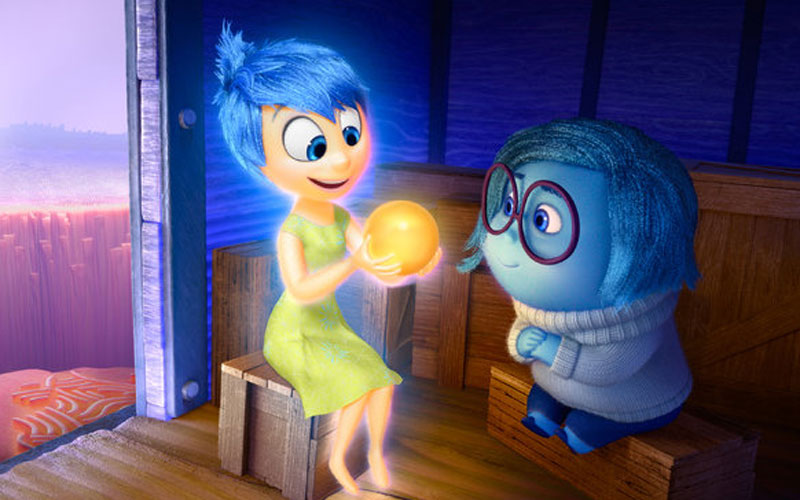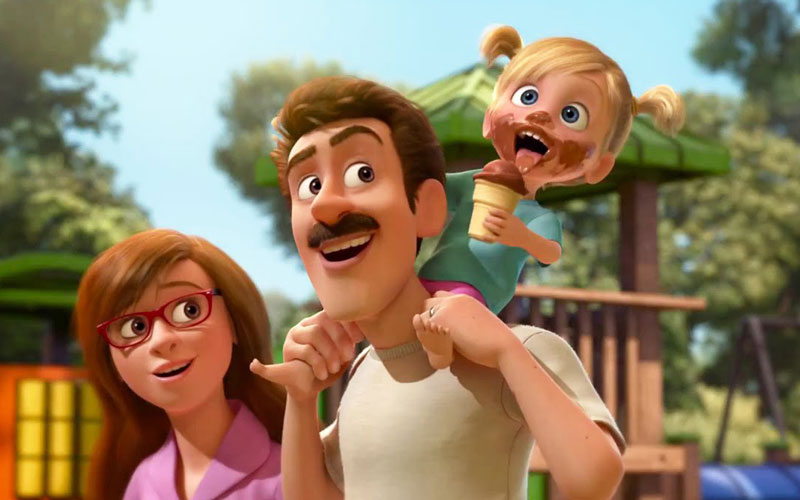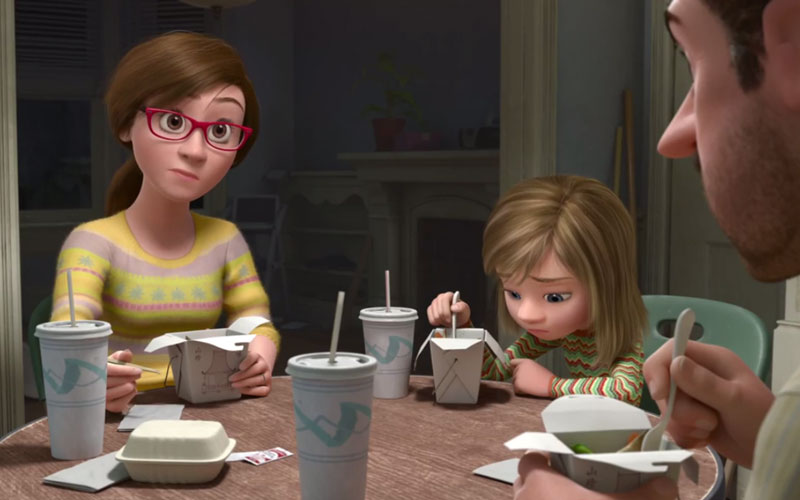The new Pixar film Inside Out has the audacious ambition of personifying the emotions that control our lives, and triumphantly makes feelings come to life in a way never before seen on screen. Families will enjoy the dramatic, and often hilarious, antics of a set of characters who are actually feelings – Joy, Sadness, Anger, Disgust and Fear. They'll also appreciate the high-jinks that play out as these feelings vie for control of the life of Riley, the hockey-playing main character, whose life gets slammed against the boards when her Dad takes a job on the West Coast.
In a blissfully efficient prologue, we're treated to a whiz bang demonstration of how Joy (voiced by Amy Poehler) and her compadres control Riley's emotions. (They actually sit at a control panel and guide her every move through the day, Anger fighting for control from Fear, and from Disgust and Sadness, but with Joy ruling triumphant over the team). The cross -country move leaves Riley to fend for herself in a new town, without friends or the the comforts of home (the family's moving van goes to Texas instead of California). Reduced to sleeping on the floor of a new bedroom, with parents who are distracted by work and the stress of the move, Riley's new life goes topsy-turvey when she gets overwhelmed and cries on the first day of school. The team at the helm of her emotional control panel is thrown for a loop at the upset and the ensuing storyline is a journey through the landscape of Riley's brain, a colorful world with workers and storage rooms, characters from the future and the past. Joy and Sadness are dispatched on a quest to restore Riley's sunny personality.
 What's revolutionary about the film is that the abstract concepts of memory, personality, and the subconscious are visualized as a colorful, concrete world that neuroscientists can only dream about. And rest assured, the stakes are high – her stabilizing core memories are dying, and the strong concepts of family and friendship that make Riley a resiliant happy young lady are desperately imperiled. It's a credit to the filmmakers that they keep the abstraction alive throughout an adventure storyline that kids could have found too heady. Riley's San Francisco world is grey and stollid, but the universe inside her mind plays out in vivid color and eye-popping originality. Her imagination is personified by an imaginary friend, and the age-old question of what makes us tick is drawn up as a vast landscape of thoughts, memories, and emotions. It's a rollercoaster ride of feelings that every parent will recognize as a milestone that kids must go through as childhood fades, and the world of school and friends gain importance.
What's revolutionary about the film is that the abstract concepts of memory, personality, and the subconscious are visualized as a colorful, concrete world that neuroscientists can only dream about. And rest assured, the stakes are high – her stabilizing core memories are dying, and the strong concepts of family and friendship that make Riley a resiliant happy young lady are desperately imperiled. It's a credit to the filmmakers that they keep the abstraction alive throughout an adventure storyline that kids could have found too heady. Riley's San Francisco world is grey and stollid, but the universe inside her mind plays out in vivid color and eye-popping originality. Her imagination is personified by an imaginary friend, and the age-old question of what makes us tick is drawn up as a vast landscape of thoughts, memories, and emotions. It's a rollercoaster ride of feelings that every parent will recognize as a milestone that kids must go through as childhood fades, and the world of school and friends gain importance.
The film treats memory with a special reverence. Joy's role is to protect every bit of Riley's past in a perfect, sunny yellow marble-like ball – an optimal day ends with plenty of yellow marbles running back to be stored in short and long-term memory catalogues. But when feelings start to get trickier, attracting the blue-toned Sadness, the yellow memory ball can be tinged with – and even turn into – a blue memory. The climax of the film comes when the irrepressible Joy realizes that emotional maturity comes with a recognition of the difficult, or sad parts of life. And that pairing them with all the other emotions helps Riley cope with the tough moments of life.

As with all of Pixar's finest, the film is comedic romp that packs a memorable punch – and not just because everyone will have tears flowing at the finale. Inside Out champions the notion that our personalities and character are forged in childhood, highlighting the importance of the happy moment and rewarding parents for the work they do to create these moments for their kids. And most powerfully, the film reminds us that unfettered joy in a life is not enough to create a resililant human being. Sadness (and vulnerability) need to work with all the other emotions to power us through the challenges – and joy – of life.
The film has been awarded the Common Sense Seal, a new marker of the best of the best in family entertainment. Here is the Common Sense Media review, which rates the film as fine for kids 6 and over.



